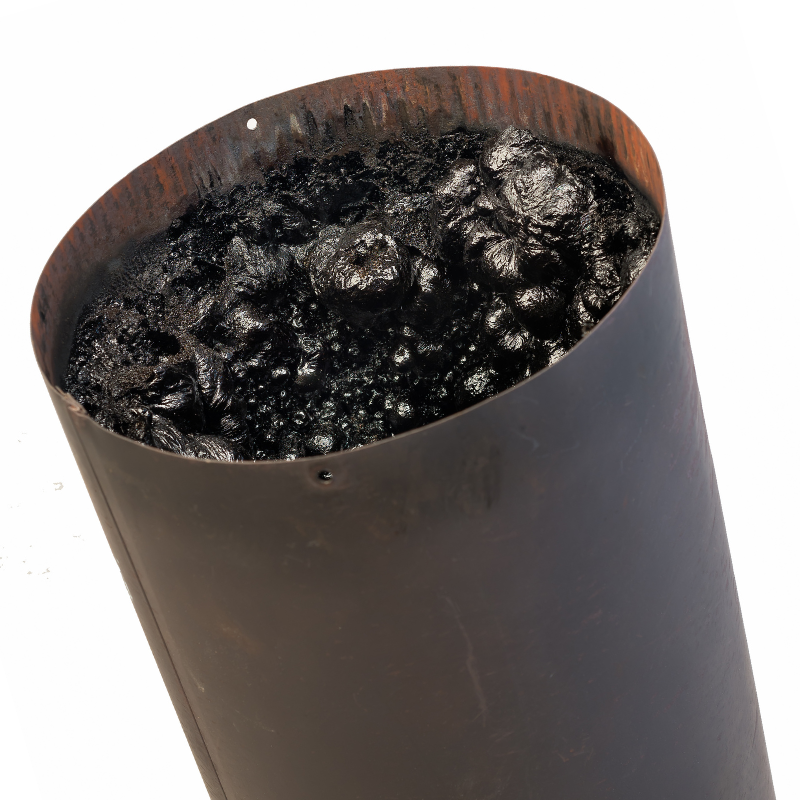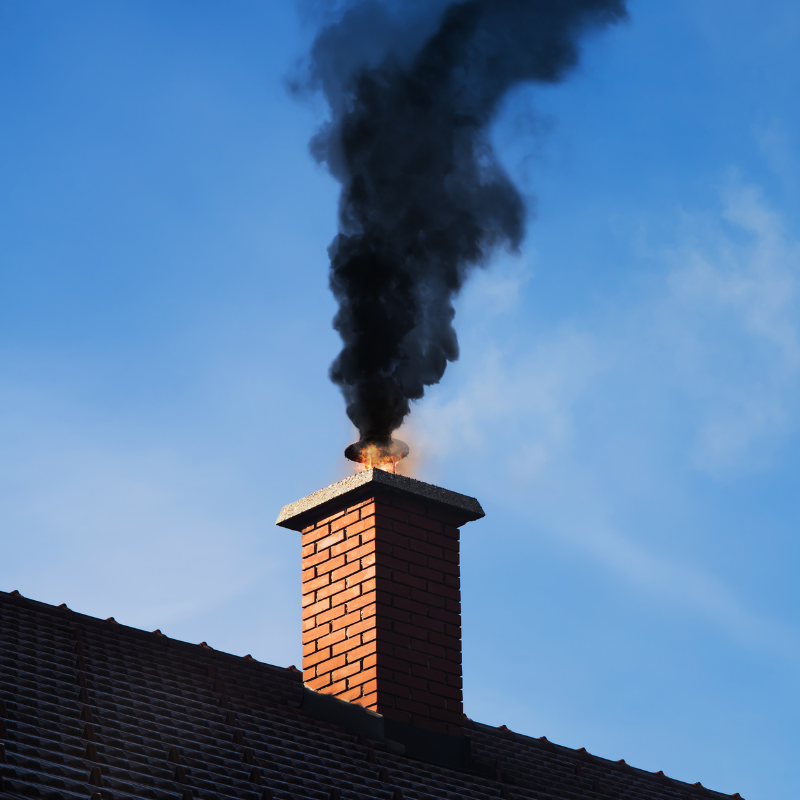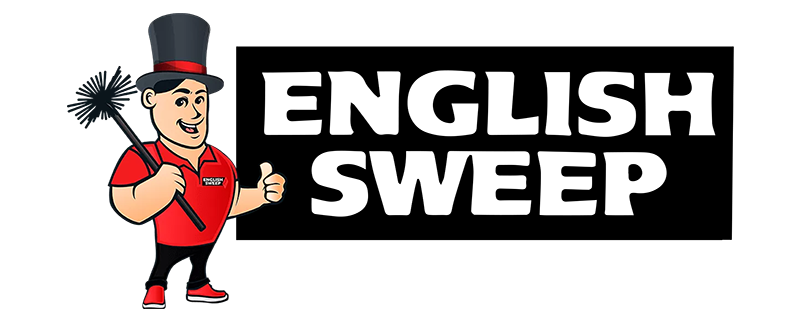A chimney’s job is to transport the smoke and fumes from your fires to the outside of your home, making your fireplace experience as safe and enjoyable as possible. However, a chimney can also become a hazard if left without proper care.
One issue to watch for is creosote accumulation, which can lead to bigger issues like chimney fires, carbon monoxide leaks, masonry damage, and broken down components.
Avoid it all this fall by scheduling your annual inspection with our crew today.
What Is Creosote & How Does It Affect Your Chimney?

Creosote is something that forms in the flues of wood-burning fireplaces and stoves. As the wood is burned, the smoke, fumes, and byproducts are carried up and into the chimney. And as these substances cool down near the top of the flue, they create condensation, which causes them to cling to the interior walls of the chimney and form into the substance we know as creosote.
Creosote can either be black or dark brown and is typically either flaky, sticky, or completely hardened. One thing’s true no matter what type you have, though – leaving creosote inside your chimney can create hazards for both your home and the people inside it. Not only does creosote cause the chimney to corrode and weaken over time, but it is also carcinogenic and combustible and can cause a chimney fire if left unaddressed.
How to Prevent Creosote Buildup
Although creosote will inevitably form as the chimney is used, there are still some some things you can do to effectively keep buildup at a minimum. Here are some good practices to keep in mind.
🪵 Use Seasoned Wood
It’s best to use only seasoned wood in your fireplace. Green or wet wood produces more smoke as it burns, which then leaves behind higher amounts of creosote inside the chimney. Along with that, certain types of wood fare better in your fireplace. Some good options are oak, hard maple, or ash – these types of wood produce less smoke compared to other options, like cedar or pine.
🌬️ Maintain Proper Airflow
Maintaining a good flow of oxygen when using the fireplace is a vital step in minimizing creosote buildup. If you plan on burning wood for your fireplace, don’t forget to crack a window or keep the glass doors of your fireplace open. Doing this will help the air circulate better, so it moves quickly and efficiently up your flue.
❄️ Warm Up Your Flue
Consider warming up the chimney flue before starting your fire – especially during the colder winter months. Doing this will encourage smoke to move quickly up your chimney, rather than linger and form creosote. Before lighting the firewood, roll up some newspaper, light it, then hold the fire up inside the chimney until the smoke begins to rise in a straight direction. Once it does, your chimney flue is warmed up and ready for use.
🔥 Burn Clean, Hot Fires
The hotter the fire, the less smoke it produces. If you want to reduce the amount of creosote buildup, we recommend maintaining hot, fast-burning fires. Slow-burning fires send higher levels of byproducts into the chimney, which contributes to the formation of creosote.
Warning Signs of a Chimney Fire
It’s important to know the warning signs of a chimney fire so that it can be identified and addressed before any further damage or issues occur. Here are some signs that you must watch out for. Keep in mind that not all chimney fires exhibit warning signs. Slow-burning chimney fires don’t typically show off anything obvious, meaning many won’t realize they’ve even occurred.
Signs a chimney fire is currently occurring…
- You note a strong and unpleasant odor coming from the fireplace.
- Large amounts of dark smoke are exiting the chimney.
- The chimney is producing sparks and sending them out through the top of the flue.
- You hear popping or rumbling sounds coming from the fireplace.

Note: If you notice any of the mentioned warning signs of a chimney fire, call the local fire department immediately. Attempting to extinguish the fire yourself could lead to injury and extensive damage. It’s best to leave it to the professionals and allow them to handle the situation.
Signs a chimney fire has already occurred…
- Discoloration on the chimney cap
- Damaged or cracked flue tiles
- Smoke seeping through tile liners
- Creosote residue on your roof or surrounding areas
- Damaged roof
- Creosote on the chimney looks odd and puffy
- Nearby structures on the roof, like TV antennas, have been damaged
The Importance of Yearly Chimney Inspections
Chimney inspections should be performed annually to prevent damage, inefficiency, and potential hazards. By performing a chimney inspection, we can identify any serious issues – like creosote buildup – ahead of time and address them before they become a threat.
When you book with us, we’ll start by assessing the condition of your chimney and checking for any possible hazards. Once we’re done looking everything over and completing our analysis, we’ll recommend the next best steps for keeping your system in tip-top shape. That may mean scheduling your next sweeping or we might suggest investing in corrective actions or upgrades.
No matter what you need, our experts can help.
Need a Chimney Sweep? Give Us a Call
Don’t let creosote ruin your chimney to the point of no return. We offer reliable chimney sweeping and chimney inspection services to ensure that your home is creosote-free and functioning as safely as possible.
Schedule your next appointment by calling 636-225-3340 or reaching out online today.


Recent Comments